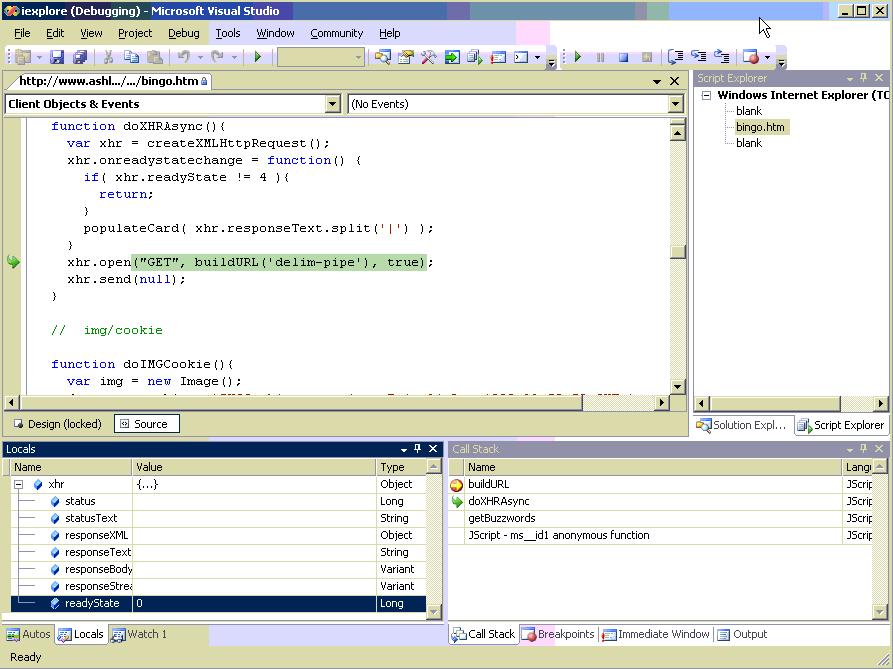I have seen a lot of griping over the years about an imagined scarcity of debugging tools for IE. I find it remarkable that people in the business don’t know what’s available.
Microsoft has had great debugging tools for IE since Visual Interdev as far back as 1998 or so and continuing through to Visual Studio. The visual studio debugger has breakpoints, watch variables, call stack, step in/out/over, object browsing, immediate window, debug output window, and more.
If you didn’t want or need an entire IDE, Microsoft Script Debugger became available as a download for NT4 and Win98/ME, later becoming a component delivered with Windows operating systems as of Windows 2000 that simply required enabling. The Script Debugger is a lot lighter than the VS debugger, but still has breakpoints, watch variables, call stack, step in/out/over, immediate window, and debug output window.
Now Microsoft has released their Visual Web Developer Express IDE for free. Install it, then in your browser’s advanced options, uncheck the two boxes that disable debugging, and you have a debugger that is every bit as powerful as Mozilla’s Venkman ever was.
Here is a screenshot of a simple single-page debug session (click to open full size):

No wonder it took so long for Javascript to get any respect if people didn’t know that there were decent tools for it.

